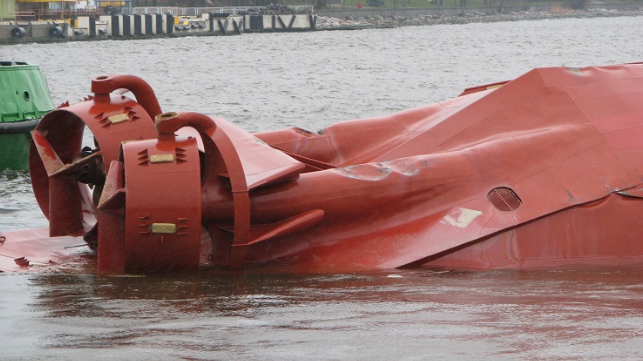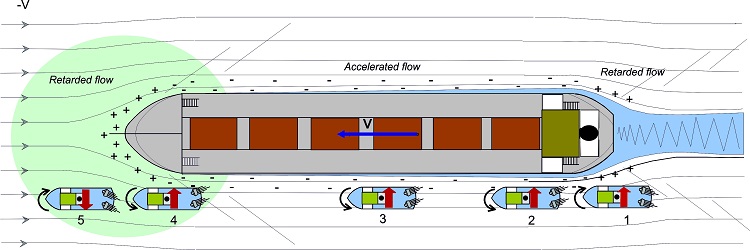Tug Assistance: Be Aware of the Risks

Tugs rendering assistance are operating in close proximity to a ship. If the ship has speed on, it may include risks for the tug, its crew and the ship to be attended. This is caused by the interaction effects between ship and tug and as a consequence the tug experiences suction forces and turning moments which vary quickly near the bow and stern of a ship.
The smaller the distance between tug and ship and the higher ship’s speed, the larger the interaction effects are and they may become too strong for a tug to escape from these effects. The interaction forces increase with the square of ship’s speed, which means that these effects are twice as high with for instance seven knots speed as with five knots speed.
Tug masters not being aware of threes effects or not having the right experience has resulted in serious tug accidents, for instance with the tug Barta. On April 10, 2008 the tug Barta had to come very close to the bow of a ship to pick up a ship’s mooring line as towline. The tug came in contact with the ship’s bow, could not get free. She was subsequently overrun by the ship, and two men drowned. The ship’s speed of six knots was considered too high and visibility from wheelhouse during the procedure too limited.
Such problems are often caused by a ship's speed being too high. It can also be that the tug master of the forward tug is forced to come closer to the bow than he finds safe to pick up the ship’s heaving line in order to pass the tug’s towing line to the ship. This happens due to inappropriate use of the heaving line or unsuitable heaving lines. The tug might then cross the safety limits and might come under the bow and be overrun by the ship.

Interaction effects on a tug when proceeding along a ship
Many more risks exist for ship assist tugs, such as when tugs have to fasten at the ship’s stern where interaction effects plays a role as well. Another risk comes when operating close to the ship’s stern and the ship’s propeller is used without warning.
Operating in fog involves risks as well. In dense fog, tug masters can lose their visual cues and sight of the ship and have to maneuver using radar which often does not present an optimal situation due to the reflection of the radar waves by the ship’s hull. There is furthermore a risk for bow tugs in case of a submerged bulbous bow.
All these risks should be well known. Experience and training are crucial. The risks mentioned and more,are discussed in detail in Section 6 of Tug Use in Port. The large-format hardback book is illustrated with a wealth of detailed diagrams, graphics and photographs. The book can be ordered at a price of €45 at The ABR Company Limited www.tugandosv.com.
The opinions expressed herein are the author's and not necessarily those of The Maritime Executive.
